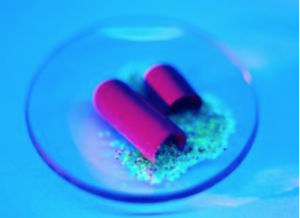 Here at The Science Advisory Board we wish to share with our members how regulatory changes in China are likely to affect the demand for analytical instruments. According to China’s FDA (CFDA), the State Council issued two five-year plans on food and drug safety earlier this year that will impact analytical instrument manufacturers. Furthermore, in regards to food safety, violation laws and quality standards will be much stricter, with over 300 national standards for consumer foods, agricultural products and pesticides to be issued between now and 2020. The hope is that China’s standards will meet international standards.
Here at The Science Advisory Board we wish to share with our members how regulatory changes in China are likely to affect the demand for analytical instruments. According to China’s FDA (CFDA), the State Council issued two five-year plans on food and drug safety earlier this year that will impact analytical instrument manufacturers. Furthermore, in regards to food safety, violation laws and quality standards will be much stricter, with over 300 national standards for consumer foods, agricultural products and pesticides to be issued between now and 2020. The hope is that China’s standards will meet international standards.
The government plans to quicken the implementation of protection from soil contamination, and grain and fertilizer management legislation, as well as ensuring that sample tests cover all types of food, specifically with testing for pesticides and veterinary drugs. If the plan goes accordingly, 97% of agricultural products will meet quality standards by 2020.
Overusing food additives, incorporating industrial ingredients in consumer foods, falsifying expiration dates and undertaking misleading advertising for healthy foods will be punished more severely. In addition, laws will be stricter pertaining to food production, food e-commerce and online ordering, as well as import/export regulations.
The plan on drug safety states that pharmaceutical drug quality is to be improved, calling for the approval of 289 generic drugs, as well as the reform of 3,050 national drug standards and 500 medical equipment standards by 2020. This will ensure that the new rate of periodic drug safety reports will reach 100%. To achieve this target, the Council urges that quality evaluations for generic drugs should be endorsed, drug manufacturing and production should be better supervised, medical treatment approvals should be re-examined and drug standards regulations should be improved.

For years, China was considered a secondary market as compared to the US, Europe, and Japan. More recently, China has emerged as a force in biotech and pharma. This past year the CFDA joined the International Council for Harmonisation of Technical Requirements for Pharmaceuticals for Human Use (ICH). The FDA outlines the mission of the ICH as “to increase patient access to safe, effective, and high quality pharmaceuticals, and to ensure that pharmaceuticals are developed and registered efficiently.” This was a major step highlighting how serious the CFDA is about advancing pharma and regulatory measures in the coming years.
We will be interested in following the growing $6 billion Chinese market and how the recent developments impact the industries where analytical instruments are used.
Copyright © 2018 scienceboard.net



